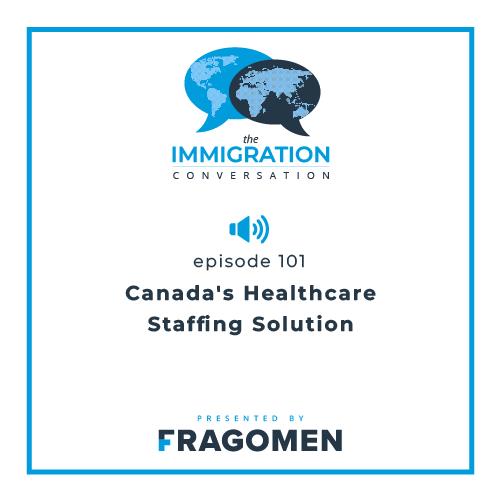
Country / Territory
USCIS has published a revised edition of the I-9 employment eligibility verification form. The new version – dated 11/14/2016 – will become mandatory for employers on January 22, 2017. Until that time, employers may continue to use the version dated 03/08/2013.
The new edition does not change the key substantive questions on Form I-9 or the list of acceptable identity and work authorization documents, but it contains some format changes that are intended to reduce completion errors.
Features of the New Form I-9
The new Form I-9 is a “smart” document with enhancements that are available when the form is filled out on a computer, including:
-
Auto-population of certain fields based on information entered elsewhere on the form;
-
Drop-down lists from which List A, B and C identity and work authorization documents can be selected based on the employee's citizenship or immigration status;
-
A new “Additional Information” text field in which employers can enter annotations on special situations, such as employment authorization extensions for STEM OPT applicants, cap-gap beneficiaries and TPS beneficiaries;
-
Hover-over instructions for each field; and
-
A validation feature to alert the user if fields have been improperly filled or left blank.
Section 1 clarifies that an employee need only provide other last names used (if any) rather than full names used, and that a foreign national authorized to work may provide either the I-94 admission number or a foreign passport number (rather than both).
Preparers and translators, if any, will now be required to certify their assistance with completion of the form. The two-page form can be expanded to an additional page if more than one preparer or translator assists.
Completing and Signing the New Form I-9
The new Form I-9 may be filled out on a computer or by hand. Although the new edition is optimized for electronic completion, it does not have an electronic signature function. If completed on the “smart” PDF available through the USCIS website, Form I-9 must be printed out and signed by hand by the employee, employer, and, if applicable, any preparer or translator.
Electronic signatures remain acceptable on I-9 forms that are completed through third-party software and other tools with an electronic signature function, provided that they meet government guidelines.
What This Means for Employers
Employers should ensure that the new form is integrated into their employment verification systems and processes by January 22, 2017. If you have any questions about the new Form I-9, please contact your designated Fragomen professional. This alert is for informational purposes only.
Country / Territory
Explore more at Fragomen

Blog post
The UK expands its High Potential Individual (HPI) visa for 2025, broadening eligibility for global graduates and entrepreneurs while introducing new requirements and application caps

Video
The latest Mobility Minute features Manager Alex Hood discussing recent updates to the UK’s High Potential Individual route, including expanded university eligibility, a new annual cap and modernized governance measures.

Media mentions
Managing Partner for the Middle East and Africa Murtaza Khan discusses how the UAE’s flexible migration policies attract talent and support a competitive labour market.

Media mentions
Senior Counsel Mitch Wexler notes that the US expansion of social-media screening to H-1B and H-4 visa applicants will involve a more detailed review of their online activity.

Media mentions
Partner Edward Raleigh highlights the need for companies to prepare for increased H-1B enforcement and ensure compliance with US worker requirements.

Video
In this Mobility Minute, Associate Rebeca Lafond outlines key considerations for international travel to the United States during the holiday season, including documentation requirements, visa processing expectations and enhanced screening on entry.

Media mentions
Partner K. Edward Raleigh explains that the Department of Labor’s Project Firewall expands H-1B oversight beyond individual complaints and increases the scope of employer compliance reviews.

Media mentions
UK Government Affairs Strategy Director Shuyeb Muquit examines how proposed settlement reforms could reshape the path to UK residency by extending qualifying periods and linking eligibility to individual contribution.

Podcast
Partner Cosmina Morariu and Business Immigration Manager Ayana Ibrahimi discuss critical immigration strategies underpinning healthcare-sector staffing in Canada, unpacking how recent policy, mobility and compliance developments are affecting employers and global talent pipelines.

Awards
Fragomen named Private Client Team of the Year at The British Legal Awards 2025, recognising the strength of our UK Private Client practice.

Media mentions
Partner Daniel Brown highlights rising deceptive practices in immigration and emphasizes stronger verification and compliance measures for employers.

Media mentions
Senior Manager Louise Senior highlights how proposed UK reforms could expand right to work checks across hospitality and reshape compliance for businesses.

Blog post
The UK expands its High Potential Individual (HPI) visa for 2025, broadening eligibility for global graduates and entrepreneurs while introducing new requirements and application caps

Video
The latest Mobility Minute features Manager Alex Hood discussing recent updates to the UK’s High Potential Individual route, including expanded university eligibility, a new annual cap and modernized governance measures.

Media mentions
Managing Partner for the Middle East and Africa Murtaza Khan discusses how the UAE’s flexible migration policies attract talent and support a competitive labour market.

Media mentions
Senior Counsel Mitch Wexler notes that the US expansion of social-media screening to H-1B and H-4 visa applicants will involve a more detailed review of their online activity.

Media mentions
Partner Edward Raleigh highlights the need for companies to prepare for increased H-1B enforcement and ensure compliance with US worker requirements.

Video
In this Mobility Minute, Associate Rebeca Lafond outlines key considerations for international travel to the United States during the holiday season, including documentation requirements, visa processing expectations and enhanced screening on entry.

Media mentions
Partner K. Edward Raleigh explains that the Department of Labor’s Project Firewall expands H-1B oversight beyond individual complaints and increases the scope of employer compliance reviews.

Media mentions
UK Government Affairs Strategy Director Shuyeb Muquit examines how proposed settlement reforms could reshape the path to UK residency by extending qualifying periods and linking eligibility to individual contribution.

Podcast
Partner Cosmina Morariu and Business Immigration Manager Ayana Ibrahimi discuss critical immigration strategies underpinning healthcare-sector staffing in Canada, unpacking how recent policy, mobility and compliance developments are affecting employers and global talent pipelines.

Awards
Fragomen named Private Client Team of the Year at The British Legal Awards 2025, recognising the strength of our UK Private Client practice.

Media mentions
Partner Daniel Brown highlights rising deceptive practices in immigration and emphasizes stronger verification and compliance measures for employers.

Media mentions
Senior Manager Louise Senior highlights how proposed UK reforms could expand right to work checks across hospitality and reshape compliance for businesses.

